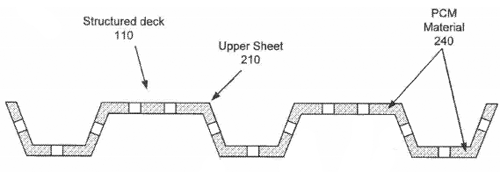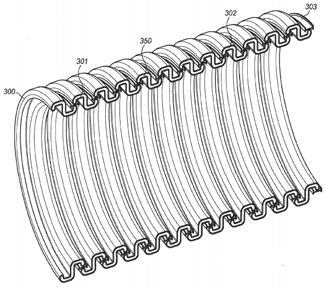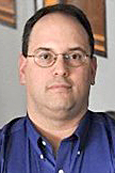 The Phase Change Matters e-mail newsletter is a weekly summary of the latest news and research on phase change materials and thermal energy storage. To subscribe, visit www.puretemp.com/subscribe. For more frequent updates, follow @puretemp on Twitter or visit the Phase Change Matters blog, www.puretemp.com/pcmatters.
The Phase Change Matters e-mail newsletter is a weekly summary of the latest news and research on phase change materials and thermal energy storage. To subscribe, visit www.puretemp.com/subscribe. For more frequent updates, follow @puretemp on Twitter or visit the Phase Change Matters blog, www.puretemp.com/pcmatters.
RESEARCH
Contributions sought for new database on thermal storage materials
A new database for thermal energy storage materials is being developed within the framework of the International Energy Agency’s Energy Conservation through Energy Storage group, Annex 29 and SHC Task 42.
The database is designed to provide characteristic data for phase change, sorption and thermochemical materials. The website, www.thermalmaterials.org, also offers a wiki with definitions related to thermal energy storage. Both areas are open for contributions.
The phase transition data provided for PCMs must be measured according to a DSC-measurement standard. To ensure the quality of the submitted data, contributors must provide a reference measurement using a PCM provided by Fraunhofer ISE.
Stefan Gschwander, head of Group Heat and Cold Storage at Fraunhofer ISE in Freiburg, Germany, said all submitted data will undergo a review process. “If the data is in
line with our requirements it can be published in the public area,” he said.
So far, 15 PCMs are listed in the public area. A restricted area of the database is limited to independently measured materials.
“The data stored is high-quality data which can be used for research, for example
simulation or to design a system,” Gschwander said. “So for our database, the manufacturers normally do not provide data but sample material that is measured from the institutions that are able to measure according the definitions. So far we have measured PCM from Rubitherm, Sasol and BASF. …
“So far we have about 20 different materials in the restricted area and, as we have used it for the development of the measurement standard, many of the materials have been measured several times by different laboratories so that we have a lot more measurements stored in the database.”
Fraunhofer ISE offers independent characterization of PCM, charging 1,500 to 2,500 euros, depending on the material and the DSC required to do the measurement.
The ECES is a technology collaboration group that supports the development of electrical energy storage, thermal energy storage, distributed energy storage and borehole thermal energy storage. For more information on the material database project, contact Gschwander at stefan.gschwander@ise.fraunhofer.de.
PATENTS
Thermal energy storage pallet

U.S. patent application 20180099778 (applicant Viking Cold Solutions Inc., Houston, Texas):
“A pallet for shipping goods, the pallet having a rigid member, a phase change material, and a temperature indicate. The rigid member includes a phase change material compartment. A phase change material is disposed in the phase change material compartment. The temperature indicator indicates a thermal state of the pallet.”
Hybrid method for transporting/storing temperature-sensitive materials
U.S. patent application 20180100682 (applicant Cold Chain Technologies, Franklin, Mass):
“A method and system for transporting and/or storing temperature-sensitive materials. In one embodiment, the system may be a hybrid system that includes an active temperature-control system and a passive temperature-control system. The active temperature-control system may be, for example, a portable refrigerator that includes an internal chamber for maintaining contents within a desired temperature range. The passive temperature-control system, which includes at least one phase-change material (PCM) member and space for receiving one or more temperature-sensitive materials, may be removably positioned entirely within the internal chamber of the active temperature-control system. When temperature-sensitive materials are loaded into the passive temperature-control system and the passive temperature-control system is loaded into the active temperature-control system, the active temperature-control system keeps the temperature-sensitive materials within a desired temperature range and charges the PCM members for when the passive temperature-control system is thereafter removed from the active temperature-control system.”
Method and apparatus for maintaining a minimum temperature in a fluid
 U.S. patent application 20180080722 (applicant GE Oil & Gas UK Ltd., Newcastle-upon-Tyne, Great Britain):
U.S. patent application 20180080722 (applicant GE Oil & Gas UK Ltd., Newcastle-upon-Tyne, Great Britain):
“Apparatus and method for maintaining temperature in a sub-sea device, in particular in relation to fluid in the device. A material having a high latent heat on phase change [303] is used to release latent heat to the fluid when the fluid temperature decreases towards a threshold value. … The use of a phase change material in accordance with the present invention is also advantageous with other types of sub-sea pipe (such as rigid pipe), apparatus and installations where a degree of temperature control is desirable.”
Aerogel composites having thermal storage capacity
U.S. patent application 20180079944 (applicant Aspen Aerogels Inc., Northborough, Mass.):
“The present disclosure can provide aerogel compositions which have a thermal storage capacity, and which are durable and easy to handle. The present disclosure can provide aerogel compositions which include PCM coatings, particle mixtures, or PCM materials confined within the porous network of an aerogel composition. The present disclosure can provide methods for producing aerogel compositions by coating an aerogel composition with PCM materials, by forming particle mixtures with PCM materials, or by confining PCM materials within the porous network of an aerogel composition.”
IN BRIEF
• Chris Sansom, an associate professor in concentrating solar power at England’s Cranfield University, says that magnesium sulphate heptahydrate, or Epsom salts, could be a viable material for seasonal heat storage. Adding water to the salts causes a reaction that creates heat at around 80 degrees C, a good match for space heating and hot water. Sansom is developing a heat storage system for the university’s growing campus. Because the school’s CHP system requires a temperature of 90 degrees C, a slightly different form of salt, magnesium nitrate hexahydrate, will be used.
 • Richard M. Formato, right, formerly R&D manager and principal technologist at Cold Chain Technologies, has joined Microtek Laboratories Inc., Dayton, Ohio, as director of new technology.
• Richard M. Formato, right, formerly R&D manager and principal technologist at Cold Chain Technologies, has joined Microtek Laboratories Inc., Dayton, Ohio, as director of new technology.
• Sonoco ThermoSafe and Cathay Pacific Cargo announced a global partnership agreement for the leasing of the PharmaPort 360 temperature-controlled bulk shipping container. The agreement enables pharmaceutical shippers to lease the containers directly from Cathay Pacific Cargo.
• Peli BioThermal is adding 13 drop points in Europe for its reusable temperature-controlled shippers. The drop points, located within Rhenus Logistics global network, are at airports in Prague, Copenhagen, Paris, Lyon, Munich, Stuttgart, Frankfurt, Dublin, Milan, Amsterdam, Warsaw, Basel and Barcelona.
• Alexium International Group Ltd. has announced that Susan Thomas has been appointed as Alexium’s new chair, replacing Gavin Rezos, who announced in November that he would step down this year. Thomas, a technology entrepreneur with a background in law and corporate finance, will assume the role at a board meeting May 8.
• In a CHEManager article provocatively titled “Hard Times for Bio-based Products,” the Frankfurt-based Society for Chemical Engineering and Biotechnology (DECHEMA) asks: What is the most promising bio-based chemical? Four chemicals are given a close look: succinic acid, glycerol, para-xylene and 1,2-propanediol. And the winner is …
RESEARCH ROUNDUP
For our full list of recent academic research, see puretemp.com/academic. Here are highlights from the past week:
From Applied Energy:• Influence of glazed roof containing phase change material on indoor thermal environment and energy consumption
• Parametric analysis of a residential building with phase change material (PCM)-enhanced drywall, precooling, and variable electric rates in a hot and dry climate
From Sensors and Actuators A: Physical:
• A phase change microactuator based on paraffin wax/expanded graphite/nickel particle composite with induction heating
From Materials Today: Proceedings:
• Experimental investigation on packed bed thermal energy storage using paraffin wax for concentrated solar collector
From Energy and Buildings:
• Overheating protection of solar thermal façades with latent heat storages based on paraffin-polymer compounds
• Single and combined phase change materials: Their effect on seasonal transition period
From International Journal of Thermal Sciences:
• Thermal field and heat storage in a cyclic phase change process caused by several moving melting and solidification interfaces in the layer
From Solar Energy:
• Macroencapsulation of sodium chloride as phase change materials for thermal energy storage
From International Journal of Heat and Mass Transfer:
• Accelerated melting of PCM in energy storage systems via novel configuration of fins in the triplex-tube heat exchanger
From Construction and Building Materials:
• Physical and mechanical properties of fly ash and slag geopolymer concrete containing different types of micro-encapsulated phase change materials
From Applied Thermal Engineering:
• Investigation of PCM Charging for the Energy Saving of Domestic Hot Water System
NETWORKING
Connect with PCM experts and industry leaders on LinkedIn
 More than 1,200 people have joined a LinkedIn group devoted to the discussion of phase change material and thermal energy storage. The Phase Change Matters group is an interactive complement to the award-winning blog and newsletter of the same name.
More than 1,200 people have joined a LinkedIn group devoted to the discussion of phase change material and thermal energy storage. The Phase Change Matters group is an interactive complement to the award-winning blog and newsletter of the same name.
You are invited to join the group and connect with PCM and TES experts from around the world. This week we welcomed Joey Anthony, development engineer at Daikin Applied Americas, Plymouth, Minn.; Shubham Barhate, mechanical design engineer at Grinntech Motors & Services Ltd., Bengaluru, India; John Bergida, president and founder at Frosty Cold LLC, Overland Park, Kansas; Prahlad Kulkarni, graduate research assistant at Purdue University, West Lafayette, Ind., and John Noel, Ph.D. student at Dalhousie University, Halifax, Canada.